In this episode, Kristen Eglintine, Senior Manager of Revenue Integrity Services of Coding & Projects at BESLER, provides us with a glimpse into BESLER’s next live, The Hospital Finance Academy Webinar, 2026 New Technology Add-on Payments (NTAPs), hosted on Wednesday, October 29, at 1 PM ET.
Podcast (hfppodcast): Play in new window | Download
Learn how to listen to The Hospital Finance Podcast® on your mobile device.Highlights of this episode include:
- How the NTAP program works
- How a technology qualifies for NTAP
- 54 technologies CMS approved for fiscal year 2026
- Hospital departments benefit more from NTAPs
- Specifics on the NTAPs covered on the webinar
- Practical next steps after attending that webinar
Kelly Wisness: Hi, this is Kelly Wisness. Welcome back to the award-winning Hospital Finance Podcast. We’re pleased to welcome back Kristen Eglintine, Senior Manager of Revenue Integrity Services of Coding and Projects at BESLER. In this episode, Kristen will provide us with a glimpse into BESLER’s next live, The Hospital Finance Academy Webinar, 2026 New Technology Add-on Payments or NTAPs that we’re hosting on Wednesday, October 29, at 1 PM Eastern Time. Welcome back and thank you for joining us, Kristen.
Kristen Eglintine: Well, thank you, Kelly. I’m really happy to be here.
Kelly: We’re happy to have you back. Well, let’s go ahead and jump in. BESLER is hosting a webinar on 2026 NTAPs. And before we hear more about the specifics on the actual NTAPs, can you tell us about how the NTAP program works?
Kristen: Yeah, absolutely. So, a couple weeks back, you and I talked about the fiscal year 2026 IPPS updates, and I touched briefly on NTAPs at that time. But today, I’m excited to give NTAPs the spotlight they deserve and dive a little bit deeper into what’s new for this year. So, you’re asking how the program works. The New Technology Add-on Payment, or NTAPs as we call it, it’s a reimbursement mechanism administered by CMS under the IPPS. And it’s designed to help hospitals adopt and use new, often expensive medical technologies that have recently entered the market and are not yet fully reflected in Medicare standard payment rates. NTAP provides additional payments to hospitals that use qualifying new medical technologies, devices, or drugs. The goal, again, is to promote early access for Medicare beneficiaries to innovative treatments while CMS gathers enough data to hopefully adjust future DRG payment rates to include the costs of these new technologies. So the hospital receives the add-on payment. It’s an additional amount above the standard DRG reimbursement for each qualifying inpatient case where an NTAP technology is used. Typically, the payment covers up to about 65% of the technology’s costs above the DRG amount. But for certain qualifying products, it could go up to 75%. Technologies retain their NTAP status for up to three years. And then their costs are either incorporated and recalibrated DRG payment rates, or they just sunset.
Kelly: Thank you for sharing that information about the program. It’s very interesting. So how does a technology qualify for NTAP?
Kristen: It’s quite a process. To qualify for an NTAP, a technology must meet three primary criteria. So, newness is the first. The technology must be recently approved or cleared by the FDA and not in widespread use for more than two to three years. It cannot be substantially similar to any existing technology. So, CMS considers the technology not new if it has the same or a similar mechanism of action as an existing product, if it has the same MSD or G assignment as an existing product, or the same type of disease and patient population as an existing product. The second primary criteria a technology must meet is cost. The technology must be inadequately covered under current Medicare DRG payments, meaning its average inpatient case cost exceeds the established cost threshold. And then third, the technology must represent a substantial clinical improvement. It must offer measurable improvement in patient outcomes, diagnosis, or treatment effectiveness compared to what’s currently available. Let me give you a couple of examples. So. offering a treatment option for patients unresponsive or ineligible for current therapies, enabling earlier or more accurate diagnosis of a medical condition that affects patient management, or producing significantly better clinical outcomes compared to previous technology or treatments. So those are some examples of what CMS would consider clinical improvements.
So, if a technology meets all of that, all of those primary criteria’s, the manufacturer would apply. The application process for NTAP submissions is an annual cycle, and it’s aligned with CMS’s IPPS rulemaking schedule and involves several formal steps and key deadlines. Their applications must contain numerous things: detailed descriptions of the technology, evidence addressing all of the NTAP eligibility criteria, clinical studies, data supporting substantial clinical improvement must be on the application, comprehensive cost analysis, and then documentation of the FDA status and the proposed ICD-10-PCS codes for that technology. So, as you can see, it takes a significant amount of planning and coordination to obtain an NTAP approval.
Kelly: That is really significant. Wow, that’s a lot. I’m not surprised, though. So, CMS has approved 54 technologies for fiscal year 2026. This is a record total. So how might this affect hospital adoption rates and billing practices?
Kristen: So great question. Yes, so for fiscal year 2026, CMS has approved 54 technologies. That includes 27 technologies that are being continued from 2025. We have five new approvals under the traditional pathway and 22 new approvals under the alternative pathway, which is primarily for breakthrough devices or infectious disease products. It is a record number of NTAPs, and I believe this really reflects CMS’s growing support for hospital adoption of innovative therapies and technologies. Hospitals now have greater financial incentives to adopt innovative therapies and devices, especially those with high per-case add-on payments, such as newer gene therapies, which can reimburse hospitals up to millions per administration of those selected products. The expanded NTAP list encourages hospitals to stay current with emerging technology and to incorporate breakthrough treatments into inpatient care more rapidly than before. And then hospitals may be more willing to invest in training and infrastructure to accommodate these new technologies. Billing practices will also be impacted. Accurate coding and documentation will become even more crucial as coders must recognize and assign the unique codes for these devices, agents, or substances that were approved for NTAPs. Billing staff and case managers need to stay up to date on NTAP eligibility and reimbursement rules. The overall complexity of the billing process may actually increase, too, with more technologies to track, to code, to document. This all demands greater focus on education and compliance for hospital billing departments. And then hospitals with robust billing systems and coding expertise that are well-positioned to maximize NTAP reimbursements, whereas those less prepared could miss out on substantial financial benefits.
So, in short, this 2026 NTAP expansion will hopefully accelerate hospital adoption of new technologies and increase the administrative focus on coding accuracy and thorough documentation. This can be considered a significant shift towards incentivizing high-value, innovative treatments and making them accessible to patients under Medicare. So, all good things.
Kelly: Yeah, most definitely. Wow, it’s a lot for this year. So do any hospital departments benefit more from NTAPs?
Kristen: Yeah, I would say definitely. NTAP devices are most quickly adopted by hospital departments that regularly manage complex, high acuity cases, and are active in clinical innovation. So specifically, three types of departments would stand out. It would be like your cardiology and cardiovascular surgery. Cardiology units consistently lead NTAP adoption, driven by high numbers of approved NTAP devices and vascular and cardiac specialties. These departments benefit from the new stents and valve procedures, implantable devices, and so on. And cardiac units are often early adopters due to the experience with device trials and their high case volumes. Another department would be oncology. Oncology departments, including cellular therapy and bone marrow transplant teams, respond quickly to NTAPs awarded to gene therapies and the CAR T-cell treatments, as Medicare reimbursement offsets the enormous costs of those drugs. And then I’d say the third department would be like neurology or neurosurgery and stroke services. Neurology and neurosurgery departments embrace NTAPs for neurological diagnostic imaging and AI-based triage technologies such as stroke detection platforms and implantable neuromodulation devices.
Kelly: All those make a lot of sense to me. As you were kind of talking about them, I’m like, yeah, that makes a lot of sense that those departments would benefit more. Can you share specifics on the NTAPs you plan to cover on the webinar?
Kristen: Yeah. I’ve got seven lined up for the webinar. Let me give you a taste of two of them. So, one is called the 4WEB Medical Ankle Truss System. The system received NTAP designation from CMS for fiscal year 2026 through the alternative pathway based on its FDA breakthrough device status. So earlier, I was mentioning there’s traditional or alternative pathway designations. The alternative means it only needed to meet the cost criterion for NTAP approval. CMS assumes, because it had a breakthrough device approval from the FDA that it fulfills the newness and substantial clinical improvement criteria. So, this system is a titanium alloy implant, and it’s designed for ankle fusions. The ATS, as it’s known, it targets a small but high-need patient population, primarily those facing severe complications following failed ankle surgeries and for patients at risk for loss of limb. Early clinical evidence demonstrates significant improvement in limb salvage rates and reductions in complications and reoperations. So it’s supporting a substantial clinical improvement criteria benefit for hospitals and patients.
Another NTAP that we’ll go into in detail in the webinar is the AGENT Paclitaxel-Coated Balloon Catheter. So, this device was awarded the NTAP designation for fiscal year 2026 by CMS, becoming the first and only drug-coated balloon of its type for coronary angioplasty in the US. This device is indicated for adult patients who have coronary artery disease experiencing in-stent restenosis, which is like the narrowing of a coronary artery that was previously treated with the stent. So, the agent delivers this drug, Paclitaxel, directly to the vessel wall during percutaneous coronary intervention. And it significantly reduces the risk of restenosis compared to an uncoated balloon angioplasty. So far, clinical trials are showing it has like an 11% reduction in major adverse cardiac events, which could be like a heart attack, a need for a repeat procedure, or even death at 12 months out versus uncoated balloons. So that’s significant. This NTAP payment per qualifying discharge is capped at a maximum of $4,000. And that’s about the 65% of the device cost. So, this is big news for interventional cardiology.
Kelly: Wow, thanks for sharing all that with us. We’re looking forward to hearing more about that on the webinar. So, it sounds like attending our upcoming webinar would be informative and beneficial. So, what are some practical next steps after attending that webinar?
Kristen: Yeah, great question again. So yes, if you’re interested in learning more about NTAPs, specifically what’s new for 2026, I encourage you to attend BESLER’s webinar. Again, it’s Wednesday, October 29, at 1 PM Eastern Time. After attending the webinar, there are several practical next steps to make the most of the information you’ll be receiving. Review and update coding practices. So, ensure all relevant team members are accurately applying the ICD-10-PCS codes for NTAP-eligible procedures so your hospitals capture all possible reimbursement opportunities. Assess your hospital’s current NTAP usage. So, compare the list of technologies and procedures that your hospital uses with the latest NTAP-approved list to identify missed revenue or coding gaps. Conducting routine audits is always recommended. Schedule regular internal audits to confirm correct documentation and billing for NTAP cases. This helps reduce the risk of revenue loss or compliance issues. Create or refine if you have an NTAP workflow. So, establish protocols for flagging, for documenting, and coding NTAP cases efficiently. Make sure your processes are ready for new fiscal year codes and technologies. And then finally, I’d say reach out for expert support. Consider a professional assessment or an outside audit if you’re unsure about your NTAP capture rate, or if you just want external validation that your processes are up to date and working well. Implementing these steps will help hospitals maximize reimbursement, maintain compliance, and stay ready for new NTAP opportunities each year. I hope you find this NTAP overview beneficial. Thank you again for choosing to spend a few minutes of your day with us. I really enjoyed sharing this information with you, and I hope to see you all on our upcoming webinar.
Kelly: Yes, thank you so much for joining us, Kristen, for giving us this sneak peek into the upcoming Academy Webinar, 2026 New Technology Add-on Payments (NTAPs), that we’re presenting live on Wednesday, October 29, at 1 PM Eastern Time. And as a bonus, you can earn CEU. Thanks again, Kristen.
Kristen: Thank you. Have a great day.
Kelly: Thank you. And thank you all for joining us for this episode of The Hospital Finance Podcast. Until next time…
[music] This concludes today’s episode of The Hospital Finance Podcast. For show notes and additional resources to help you protect and enhance revenue at your hospital, visit besler.com/podcasts. The Hospital Finance Podcast is a production of BESLER | SMART ABOUT REVENUE, TENACIOUS ABOUT RESULTS.
If you have a topic that you’d like us to discuss on the Hospital Finance podcast or if you’d like to be a guest, drop us a line at update@besler.com.





